One of the most exciting activities in the career of the RMS Olympic took place on May 12, 1918. It was when the ship intentionally rammed and sank the German submarine U-103, which attempted to torpedo the ship. The USS Davis rescued the sub’s survivors. World War I had gotten underway in August 1914. Initially, under Capt. Herbert James Haddock, the Olympic remained a commercial ship.
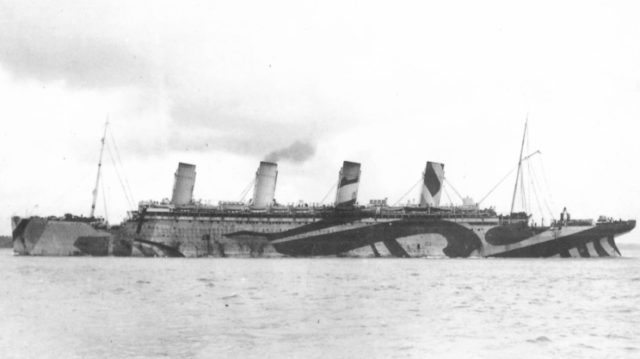
Because it was wartime, the ship was painted gray, portholes blocked off, and lights that were on the deck were turned off to make the ship less likely to be noticed. The scheduled altered quickly to not terminate at Southampton as usual but to proceed to Liverpool. Later, it was changed to Glasgow. The ship’s first wartime voyages saw the Olympic packed with Americans who were eager to return home after having been trapped in Europe at the start of the war.
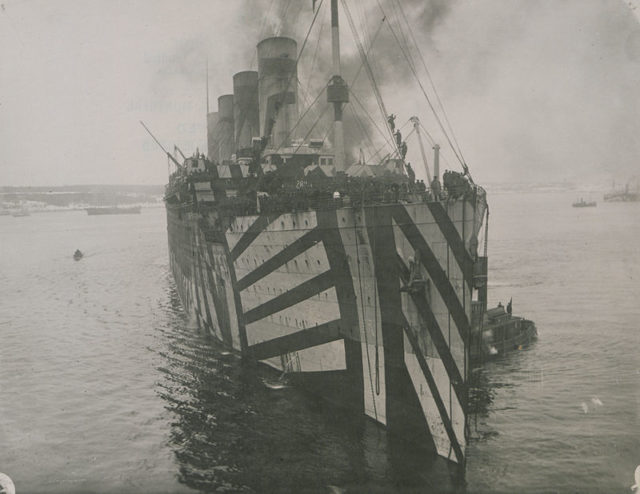
Although there were a few passengers on the eastbound journeys, the bookings dropped significantly by mid-October because there were serious threats from German U-boats. White Star Line decided to take Olympic out of commercial service.
It was October 21, 1914, when she left New York to travel to Glasgow for her last commercial voyage of the war, but she was only transporting 153 passengers. Six days into her voyage, on October 27, the ship was passing the northern coast of Ireland near Lough Swilly when she started hearing distress signals from HMS Audacious, a battleship that was taking on water after having struck a mine near Tory Island.
Audacious sent 250 of her crew on board on the Olympic. Destroyer HMS Fury managed to attach a tow cable between Olympic and Audacious so they could all head west toward Lough Swilly. The cable parted shortly after the steering gear on the Audacious failed.
They made a second attempt to tow the ship, but the cable got tangled in the propellers of HMS Liverpool, and they were severed. A third attempt was ended when the cable gave way. At 17:00, the quarterdeck of the Audacious was awash, so the decision was made to evacuate the rest of her crew onto Liverpool and Olympic. An explosion at 20:55 on board the Audacious sank the ship.
Commander of the Home Fleet Admiral Sir John Jellicoe wanted to suppress the news of Audacious’s sinking because he feared of the lowered moral the British public would feel from being dealt such a blow. He then ordered the Olympic to be held at Lough Swilly in military custody.
Passengers couldn’t leave the ship, and no communications were allowed. Only Chief Surgeon John Beaumont and the crew from the Audacious were allowed to exit her. Steel tycoon Charles M. Schwab sent word to Jellicoe that he was on his way to London for urgent business with the Admiralty. Jellicoe agreed to release Schwab as long as he agreed to remain silent about the sinking of Audacious.
On November 2, Olympic was permitted to travel to Belfast so the passengers could disembark. After the Olympic made it home to Britain, the White Star Line planned to leave her in Belfast until the war had ended. She was requisitioned in May 1915 by the Admiralty to be used for transporting troops. Cunard liners Aquitania and Mauretania were also acquisitioned. While previously the Admiralty had been reluctant to use larger ocean liners for troop transporting because they were vulnerable to enemy attack, they had little choice because of a ship shortage.
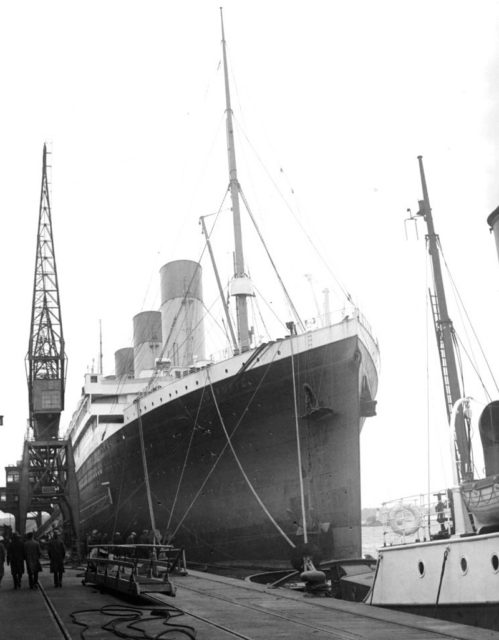
The other sister ship of the Titanic and Olympic, the Brittanic, was requisitioned as a hospital ship though she hadn’t been completed. In that role, she hit a mine and sank the following year. Olympic had her peacetime fittings stripped from her, and she was armed with 4.7-inch and 12-pounder guns. She was converted to a troopship with the capacity of transporting as many as 6,000 troops. The newly designated Hired Military Transport 2810, under Bertram Fox Hayes’ command, left Liverpool carrying 6,000 soldiers headed to Mudros, Greece for the Gallipoli Campaign on September 24, 1915. It was October 1 when she saw lifeboats from Provincia, the French ship, which had been sunk by a U-boat earlier that morning off Cape Matapan. She picked up 34 survivors.
The British Admiralty criticized Hayes for taking this action and saving the soldiers, saying he put the ship in danger by stopping in waters with active enemy U-boats. The boat’s best defense against a U-boat attack was its speed, and such a large ship that was stopped would have been an easy target. French Vice-Admiral Louis Dartige du Fournet awarded Hayes a Gold Medal of Honor for stopping to save the 34 soldiers. Olympic made several troop journeys to the Mediterranean up until early 1916, at which time the Gallipoli Campaign was abandoned.
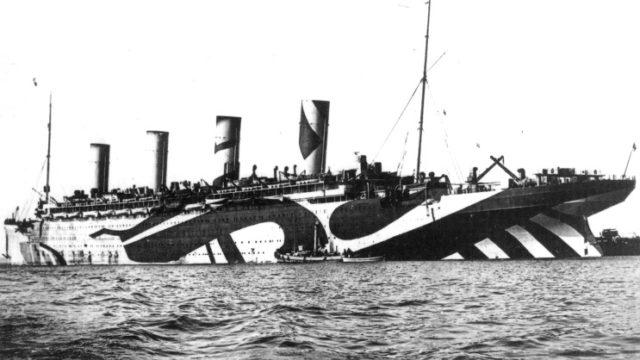
At that time, they considered using the Olympic to transport troops by the Cape of Good Hope to India. After further investigation, they determined she wasn’t suitable for such a role because her coal bunkers had been designed for transatlantic runs didn’t have the capacity needed to pursue such a long journey at a reasonable speed.
The Canadian government chartered the Olympic from 1916 to 1917 to transport troops to Britain from Halifax, Nova Scotia. She gained 6-inch guns in 1917 and was painted with a camouflage scheme to make it more challenging for those observing to estimate where she was headed or her speed. She had dazzle camouflage in the colors of white, light blue, brown, and dark blue.
She made many visits to and from Halifax Harbor transporting Canadian troops overseas safely then back home after the war. She became a favorite symbol to people in Halifax. Arthur Lismer, the noted Group of Seven artist, painted several paintings of the Olympic in Halifax. Olympic Gardens, a large dance hall, was named in honor of the ship. After the U.S. declared war on Germany in 1917, the Olympic transported thousands of U.S. troops to Britain to aid in the fighting.
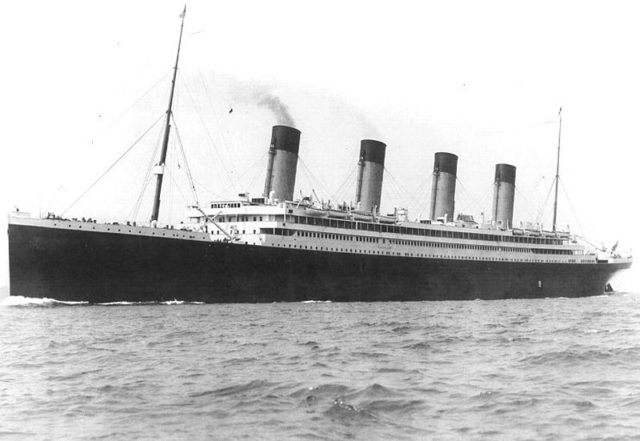
It was in the small hours of the morning of May 12, 1918, whilst the Olympic was en route to France with U.S. troops under Capt. Hayes’ command when a surfaced U-boat was sighted just 1,600 feet ahead. Her gunners immediately opened fire, and she turned, ramming the submarine, which immediately crash dived to 98 feet and turned a parallel course. It was almost immediately when Olympic struck the submarine near the conning tower with her port propeller slicing through the sub’s pressure hull.
The U-103 crew blew her ballast tanks, scuttled her and then abandoned the submarine right there. Olympic didn’t stop to pick up any survivors, but made her way on to Cherbourg. The USS Davis sighted distress flares and picked up 31 survivors from U-103.

Olympic made her way to Southampton with at least two dented hull plates and her prow twisted on one side, but it wasn’t breached. It was later learned that U-103 was intending to torpedo the Olympic when she was sighted, but the crew couldn’t flood the two torpedo tubes. Capt. Hayes was awarded the DSO for his service. Some of the American soldiers on board paid for a plaque to be placed in one of the lounges on the Olympic to commemorate the event. The plaque said:
“This tablet presented by the 59th Regiment United States Infantry commemorates the sinking of the German submarine U-103 by the Olympic on May 12th, 1918 in latitude 49 degrees 16 minutes north longitude 4 degrees 51 minutes west on the voyage from New York to Southampton with American troops. During the war, Olympic is reported to have carried up to 201,000 troops and other personnel, burning 347,000 tons of coal and travelling about 184,000 miles. Her impressive World War I service earned her the nickname Old Reliable. Her captain was knighted in 1919 for “valuable services in connection with the transport of troops.”
